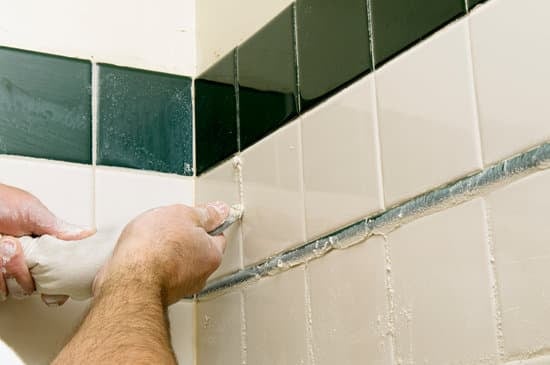Home improvements are an essential part of maintaining and enhancing the value of your property. Whether it’s renovating a kitchen, adding an extra bedroom, or upgrading your energy efficiency, these projects often require a significant amount of funding. For many homeowners, finding the right source of financing can be a challenge. With numerous options available, each with its own advantages and limitations, it is crucial to understand where to borrow money for home improvements.
Undertaking home improvement projects can not only make your living space more enjoyable but also increase its market value. However, financing such endeavors can be overwhelming without proper planning and knowledge about different borrowing options. From traditional financing methods to government programs and assistance, alternative lending platforms to local banks and credit unions, there are various sources available that can provide funds for home improvements.
Understanding the scope and cost of your specific project is the first step in deciding which financing option suits you best. Once you have determined the financial requirements, it’s time to explore various avenues for borrowing money, each with its own set of benefits and considerations.
By evaluating factors like interest rates, repayment terms, credit requirements, and flexibility offered by different lenders or programs, you can make an informed decision on which financing option aligns with your needs and financial situation.
In this article, we will delve into the numerous sources where homeowners can borrow money for their home improvement projects. We will explore traditional financing options such as home equity loans, personal loans, mortgage refinancing, and credit cards.
Additionally, we will cover government programs like FHA Title I Home Improvement Loans and Fannie Mae HomeStyle Renovation Loan that cater specifically to low-income homeowners or those seeking streamlined financing options. Moreover, we will discuss alternative lending platforms like peer-to-peer lending and crowdfunding as well as local banks and credit unions that offer community-focused financing options for home improvements.
By understanding the importance of home improvements and identifying the need for financing, homeowners can then narrow down their options and choose the best source of funding to bring their renovation dreams to life. Whether it’s exploring the benefits of traditional financing, government assistance, alternative lending platforms, or local banking institutions, this article aims to provide a comprehensive guide on where to borrow money for home improvements.
Understanding the Cost
When planning a home improvement project, it is crucial to have a clear understanding of the costs involved. Assessing the scope of your project will help you determine how much financing you will need and which financing option will best suit your needs.
The first step in assessing the cost of your home improvement project is to create a detailed budget. This should include all necessary materials, labor costs, permits, and any other expenses associated with the project. Taking the time to thoroughly research and estimate these costs will help prevent surprises and ensure that you have enough funding to complete the project.
Once you have a budget in place, it’s important to consider potential additional expenses or contingencies. It’s not uncommon for unexpected issues or delays to arise during a home improvement project, so it’s wise to budget a contingency fund of around 10-20% of the total cost.
In addition to estimating costs, it’s also important to evaluate the potential return on investment (ROI) for your home improvement project. Certain renovations, such as kitchen remodels or adding a bathroom, tend to have higher ROI than others. Understanding the potential increase in property value can help inform your financing decisions and prioritize certain projects.
Assessing the scope of your home improvement project and creating an accurate budget will greatly assist in determining how much financing you require. Having a comprehensive understanding of the costs involved allows you to choose the most suitable financing option for your needs while avoiding any financial setbacks during construction.
Traditional Financing Options
When it comes to borrowing money for home improvements, there are several traditional financing options available. These options offer stability and familiarity, making them popular choices for homeowners looking to fund their renovation projects. Here are some traditional financing options you may want to consider:
– Home Equity Loans: Unlocking the Value of Your Home:
A home equity loan allows you to borrow against the equity in your home. This type of loan typically offers a fixed interest rate and a longer repayment term, making it an attractive option for larger-scale home improvement projects. The amount you can borrow is determined by the value of your home and the amount of equity you have built up.
– Personal Loans: Flexible Funding for Home Upgrades:
If you’re looking for flexibility in terms of loan amount and repayment period, a personal loan may be the right choice for your home improvement project. Personal loans are unsecured loans, meaning they don’t require collateral such as your home or car. They generally have higher interest rates compared to home equity loans but are easier to qualify for.
– Mortgage Refinancing: Leveraging Your Existing Property Value:
If you already have a mortgage on your property, consider refinancing it to access additional funds for your home improvements. When you refinance your mortgage, you take out a new loan with better terms and use the extra cash towards renovations. This option is especially beneficial if you can secure a lower interest rate than your current mortgage.
– Credit Cards: Convenient but High-Interest Option:
Credit cards can provide convenient financing for smaller home improvement projects that don’t require significant funding. However, be aware that credit card interest rates tend to be much higher than other financing options. If considering this option, make sure to carefully manage your credit card usage and pay off the balance as quickly as possible to avoid accumulating excessive interest charges.
Having a clear understanding of these traditional financing options will help you make an informed decision when it comes to funding your home improvement project. Consider the specific needs of your project, your financial situation, and the terms and conditions of each option before making a decision. Remember to compare interest rates, repayment terms, credit requirements, and flexibility to find the best fit for your needs and budget.
Government Programs and Assistance
FHA Title I Home Improvement Loans: A Helping Hand for Low-Income Homeowners
One government program that provides assistance for home improvement financing is the Federal Housing Administration (FHA) Title I Home Improvement Loan. This program is specifically designed for low-income homeowners who do not have sufficient equity in their homes to qualify for traditional loans. The FHA Title I loan allows borrowers to borrow up to $25,000 for home improvements, with a fixed interest rate and flexible repayment terms.
To be eligible for an FHA Title I loan, homeowners must meet certain criteria such as owning and occupying the property as their primary residence, having good credit history, and demonstrating the ability to repay the loan. One of the advantages of this program is that it does not require any equity in the home as collateral, making it accessible to homeowners with limited financial resources.
Fannie Mae HomeStyle Renovation Loan: Streamlined Financing for Renovations
Another government-sponsored program that provides financing options for home improvements is the Fannie Mae HomeStyle Renovation Loan. This program allows borrowers to combine the purchase or refinance of a property with the cost of renovations into one loan. The advantage of this loan is that it provides a streamlined financing option instead of obtaining separate loans for purchasing or refinancing a property and funding home improvements.
The Fannie Mae HomeStyle Renovation Loan offers flexible terms and competitive interest rates, making it an attractive option for homeowners who want to undertake extensive renovations. Additionally, this program allows borrowers to finance up to 75% of the “as-completed” appraised value after improvements are made.
Energy Efficient Mortgages: Financing Green Upgrades for Sustainability
For homeowners looking to make energy-efficient upgrades to their homes, there are government programs that offer financing options through energy-efficient mortgages (EEMs). These programs encourage energy efficiency by allowing borrowers to finance the cost of energy-efficient improvements, such as solar panels or insulation, into their mortgage.
EEMs can be obtained through various government agencies, including the Federal Housing Administration (FHA), Department of Veterans Affairs (VA), and the United States Department of Agriculture (USDA). The specific requirements and benefits of EEMs vary depending on the program, but they generally offer lower interest rates and more lenient underwriting guidelines for borrowers.
By financing energy-efficient upgrades through an EEM, homeowners not only improve their homes but also save on utility costs in the long run while contributing to a greener environment.
Alternative Lending Platforms
When it comes to financing home improvements, alternative lending platforms have emerged as a popular choice for homeowners. These platforms offer innovative solutions that are convenient, quick, and tailored to meet the specific needs of borrowers. Whether you’re looking for a small loan or need substantial funding for a major renovation project, alternative lending platforms provide flexible options to suit your requirements.
Peer-to-Peer Lending is one such option that allows borrowers to obtain funds directly from individual investors. This type of lending cuts out the traditional financial institutions and connects borrowers with interested lenders through online platforms. Peer-to-peer lending offers competitive interest rates and streamlined application processes. Additionally, borrowers with lower credit scores may find it easier to secure loans through this channel compared to conventional banks.
Online Personal Loan Platforms are another viable option for homeowners seeking financing for their home improvement projects. These platforms connect borrowers with various lenders who can provide personal loans specifically designed for home upgrades. The application process is typically fast and convenient, allowing borrowers to access funds quickly. Additionally, many online personal loan platforms offer flexible repayment terms and favorable interest rates.
Crowdfunding has gained significant popularity in recent years for funding all sorts of ventures, including home improvement projects. Crowdfunding allows homeowners to harness the power of the crowd by raising funds from a large number of individuals who are interested in supporting their renovation endeavors. Through crowdfunding platforms, homeowners can create campaigns and share their plans with potential backers who can contribute any amount they wish towards the project.
In order to choose the right alternative lending platform for your home improvement project, there are several key considerations to keep in mind. First and foremost, compare interest rates among different platforms along with any fees or additional costs involved in obtaining the loan. It’s also important to evaluate the repayment terms offered by each lender and determine whether short-term or long-term loans best align with your financial goals.
Furthermore, assess your eligibility requirements and credit score needed by each platform in order to secure a loan. Lastly, consider the flexibility of the loan’s terms and prepayment options, as this will give you a better understanding of how the loan will fit into your overall financial plans.
Overall, alternative lending platforms offer homeowners a wide range of options to finance their home improvement projects. Whether it’s through peer-to-peer lending, online personal loan platforms, or crowdfunding, these platforms provide convenient access to funding that is often quicker and more tailored to individual needs than traditional financing options. By carefully considering the various factors involved in choosing the right option for your project, you can find the best source of financing for your home improvements.
Local Banks and Credit Unions
Local banks and credit unions are often overlooked as potential sources of financing for home improvement projects. However, these community-focused financial institutions can offer unique benefits and tailored solutions that may be more suitable for your needs compared to larger national banks. When considering local banks and credit unions for your home improvement financing, there are several factors to keep in mind.
Benefits of Choosing Local Banks and Credit Unions
One of the main advantages of working with a local bank or credit union is their emphasis on personal relationships and customer service. Unlike larger banking institutions, local banks and credit unions prioritize building strong connections with their customers, which can result in a more personalized experience when applying for a loan. Additionally, these institutions may be more willing to take a flexible approach to loan applications and approval processes, considering factors beyond just credit scores.
Another benefit is the knowledge of the local housing market that local banks and credit unions possess. They have a deep understanding of the area and can provide valuable insights into property values, which can inform the size and terms of your loan. This localized expertise can contribute to a smoother borrowing process.
Types of Financing Options Available
Local banks and credit unions offer various types of financing options that are specifically tailored to meet the needs of homeowners looking to fund their home improvement projects. These options may include home improvement loans, lines of credit, or secured loans using your property as collateral.
Home improvement loans from local banking institutions typically come with competitive interest rates since they have a vested interest in supporting the communities they serve. These loans usually have fixed repayment terms, allowing you to plan ahead financially.
Lines of credit are another common option offered by local banks and credit unions. These revolving accounts grant you access to funds as needed up to a certain limit. This type of financing works well if you have ongoing renovation or improvement projects with varying costs over time.
Lastly, secured loans may be available for homeowners who have substantial home equity. By using your property as collateral, you can access larger loan amounts and potentially receive lower interest rates. However, it is important to carefully consider the risks associated with secured loans before choosing this option.
Home Builders and Contractors
When it comes to financing your home improvement project, one often overlooked option is exploring the financing options offered by home builders and contractors. These professionals understand the financial strain that can come with upgrading your home and have developed in-house financing solutions to make the process more accessible for homeowners.
In-House Financing
Many home builders and contractors offer in-house financing options to their clients. This means that they provide loans or credit directly to homeowners for their home improvement projects. In-house financing can be a convenient option as it eliminates the need for homeowners to apply for a loan from an external lender. Additionally, these financing options may come with more flexible repayment terms and competitive interest rates compared to traditional lenders.
Vendor Financing
Another financing option provided by some builders and contractors is vendor financing. This involves partnering with material suppliers and retailers who offer their own financing programs specifically designed for home improvement projects. By working directly with these vendors, homeowners can access special financing arrangements, such as low or zero interest rates, discounted pricing on materials, or deferred payments.
When considering these financing options offered by builders and contractors, it’s important to compare them against other alternatives available in the market. Here are some factors you should consider:
- Interest Rates: Compare the interest rates offered by builders/contractors against other lenders to ensure you’re getting a competitive rate.
- Repayment Terms: Evaluate whether the loan’s repayment terms align with your financial goals and capabilities. Some in-house financing options may offer more flexibility in terms of monthly installments or grace periods.
- Credit Requirements: Assess whether the financing program from the builder/contractor has any specific credit score requirements or eligibility criteria.
- Flexibility: Examine if there are any prepayment penalties or restrictions on paying off the loan early. It’s important to have flexibility if you plan on refinancing or paying off your loan ahead of schedule.
By understanding the financing options available from home builders and contractors, you can make a well-informed decision that suits your needs and budget. These options provide an added convenience and service for homeowners looking to transform their houses into dream homes.
Considerations for Choosing the Right Financing Option
When it comes to financing your home improvement project, there are several factors that you should consider before making a decision. This section will explore some key considerations that can help guide you in choosing the right financing option for your needs.
One important factor to consider is interest rates. Different financing options will come with varying interest rates, fees, and annual percentage rates (APR). It’s crucial to compare these rates and understand how they will impact the overall cost of your loan. A lower interest rate can save you a significant amount of money over time, so be sure to shop around and find the best possible rate.
Repayment terms are another crucial consideration. Some loans offer shorter-term repayment plans, while others offer longer-term options. Shorter-term loans typically come with higher monthly payments but may save you money on interest in the long run. On the other hand, longer-term loans may have lower monthly payments but could end up costing more in total due to accrued interest. Consider your financial situation and determine which repayment plan aligns best with your budget and goals.
Your credit requirements and eligibility are also important factors to consider. Different lenders may have different credit score requirements for their loan products, so it’s essential to assess your current credit standing before applying for a loan. Knowing your credit score will help you determine which lenders you may be eligible with and allow you to focus on those options that align with your credit profile.
Lastly, consider the flexibility of the loan’s terms and any prepayment options available. Some loans offer penalty-free prepayment options, whereas others may charge fees if you decide to pay off your loan early. Flexibility in terms allows for adjustments if needed or helps accommodate unexpected changes in your financial situation.
By considering these factors along with evaluating other sections of this article such as traditional financing options, government programs and assistance, alternative lending platforms, and local banks and credit unions, you can make an informed decision about the best financing option for your home improvement project. Taking the time to research and assess these considerations will help ensure that you choose a financing option that meets your needs and helps achieve your home renovation goals.
Conclusion
When it comes to financing your home improvement project, there are numerous options available to choose from. The key is finding the best source of financing that aligns with your specific needs and goals. Consider factors such as interest rates, repayment terms, credit requirements, and flexibility before making a decision.
Whether you opt for traditional financing options like home equity loans or personal loans, government programs and assistance, alternative lending platforms, or local banks and credit unions, each option has its own advantages and considerations. By weighing these factors carefully, you can make an informed decision that suits both your budget and vision for your home.
One important consideration when choosing the right financing option is interest rates. Be sure to compare rates, fees, and annual percentage rates (APR) among different lenders. This will give you a clear picture of the total cost of borrowing and help you choose the most affordable option.
Repayment terms are another crucial factor to consider. Evaluate whether you prefer short-term or long-term loans based on your financial situation and ability to repay the loan amount within a certain timeframe.
Credit requirements play a significant role in determining eligibility for certain types of financing. Make sure to assess your credit score and understand any minimum requirements set by lenders.
Lastly, flexibility should be examined when selecting a financing option. Look for loans that offer favorable terms such as prepayment options that allow you to pay off the balance early without penalty.
By carefully considering these factors and analyzing the various sources of financing available to you, you can find the best fit for your home improvement project. Remember, each option has its own pros and cons, so take the time to research thoroughly before making a decision. With proper planning and financial foresight, you can transform your house into the dream home you’ve always envisioned while staying within your means.
Frequently Asked Questions
Can I borrow money to upgrade my house?
Yes, it is possible to borrow money to upgrade your house. There are various options available for financing home improvements, such as home equity loans, home equity lines of credit (HELOCs), personal loans, and even government-backed renovation loans.
The specific terms and conditions will depend on the lender and the type of loan you choose. It’s important to carefully consider your financial situation and budget before deciding to borrow money for home upgrades.
Are renovation loans a good idea?
Whether renovation loans are a good idea depends on individual circumstances and preferences. Renovation loans can be beneficial in many cases as they provide a dedicated source of funds specifically for home improvements. These loans often come with competitive interest rates and flexible repayment terms.
They can be particularly useful if you don’t have sufficient savings or don’t want to deplete your savings for renovations. However, it’s essential to thoroughly research and compare different loan options and consider the costs associated with borrowing before making a decision.
How much interest will I pay on a home improvement loan?
The amount of interest you will pay on a home improvement loan depends on several factors, including the loan amount, interest rate, loan term, and any additional fees charged by the lender. Typically, interest rates for home improvement loans range from around 4% to 36%, depending on various factors like credit score and the type of loan chosen.
It’s crucial to shop around and compare offers from multiple lenders to find the most competitive interest rate possible. To determine the total interest payment over the life of the loan, you can use online calculators or consult with lenders who can provide detailed information based on your specific circumstances.

I’m thrilled to have you here as a part of the Remodeling Top community. This is where my journey as an architect and remodeling enthusiast intersects with your passion for transforming houses into dream homes.





